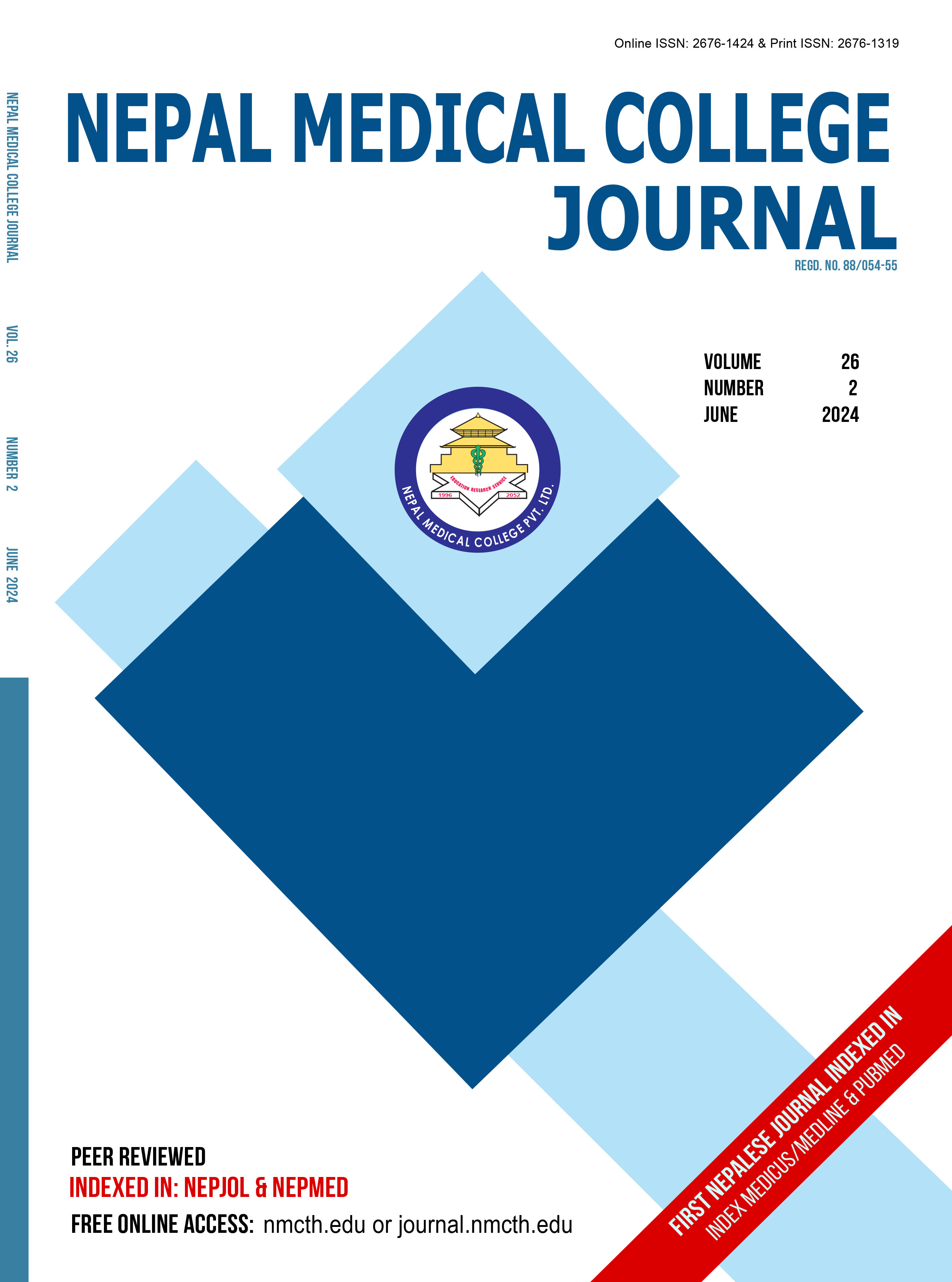Nutritional Status and its Associated Factors among Government School-Going Adolescents of Birendranagar Municipality, Surkhet, Nepal
DOI:
https://doi.org/10.3126/nmcj.v26i2.67211Keywords:
Nutritional status, body mass index, adolescents, WHO Anthro , associated factor, NepalAbstract
WHO recently published report reveals a large number of adolescents in the Southeast Asian Region, who constitute one-fifth (20.0%) of the population in these countries, suffer from malnutrition and anemia, which adversely impact their health and development. If adolescent malnutrition is not treated on time, it leads to major repercussions such as low birth weight and poor health in adulthood. A survey on the nutritional status of adolescents based in 13 districts of Nepal revealed that almost six out of ten male adolescents and seven out of ten(71.0%) of female adolescents were undernourished. The likelihood of undernutrition was high among adolescents residing in Terai (72.0%), followed by Hill (59.0%) and Mountain (54.0%). A cross-sectional descriptive study was carried out among the adolescents of grade 6 studying in the government school of Birendranagar Municipality from May to October 2023. A total of 240 students were selected from five constitute the sample size of the study. The selection was based on stratified random sampling, where each school was considered a stratum. Anthropometric measurement assesses nutritional status based on BMI. Attempts were made to determine the associations between the nutritional status and socio-demographic, behavioral hygiene and diet-related variables. Of the total adolescents, 55.8% were normal, 22.3% were thin and 22.9% were very thin. The nutritional status of the adolescents was observed to be significantly associated with their family type, family income, physical activities, and mother’s education. Encouraging physical activities and promoting healthy habits can enhance the nutritional status of adolescents in the population of students of grade 6 at governmental schools of Birendranagar Municipality, Surkhet, Nepal.
Downloads
Downloads
Published
How to Cite
Issue
Section
License
Copyright (c) 2024 Nepal Medical College Journal

This work is licensed under a Creative Commons Attribution 4.0 International License.
This license enables reusers to distribute, remix, adapt, and build upon the material in any medium or format, so long as attribution is given to the creator. The license allows for commercial use.




